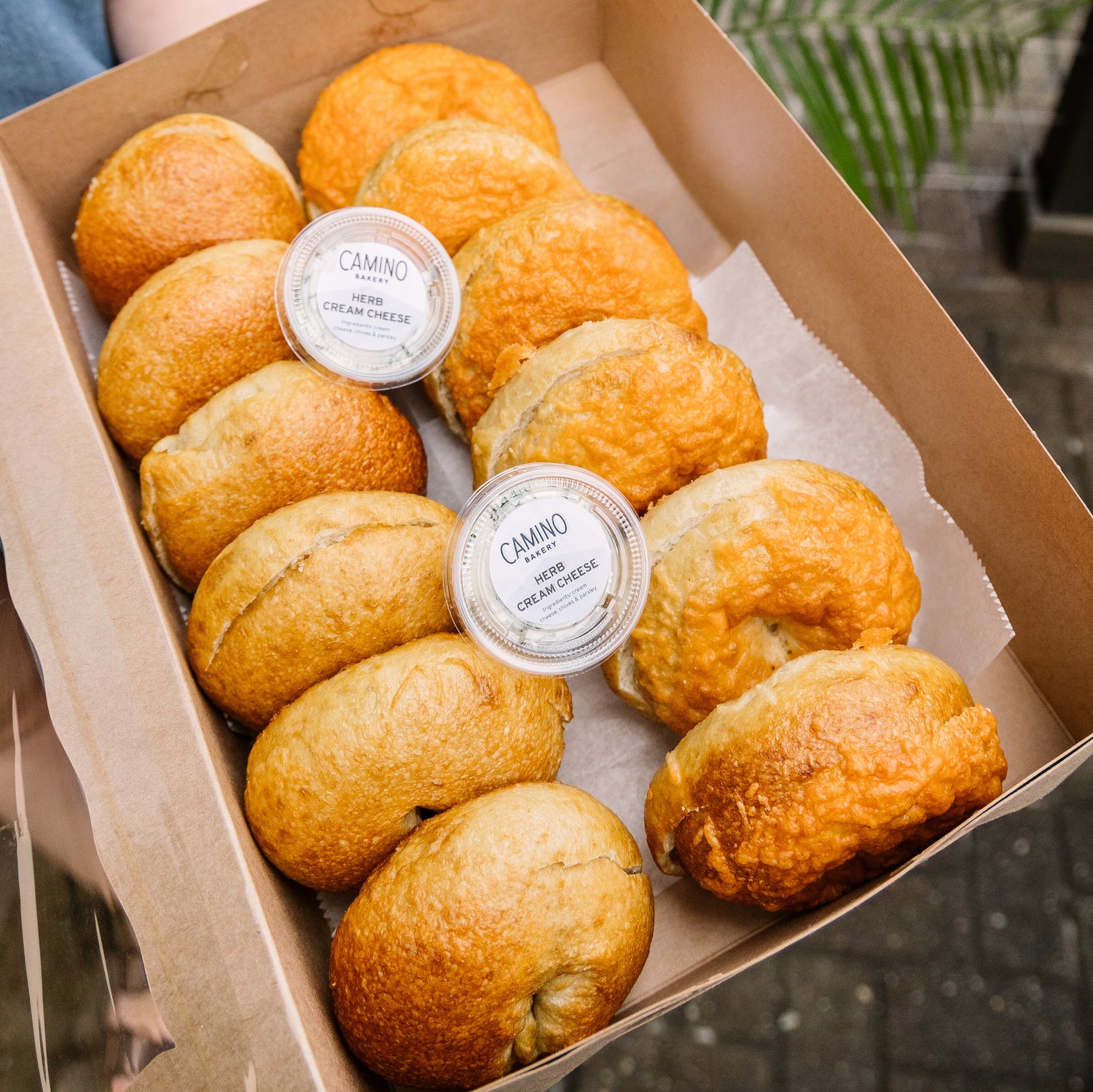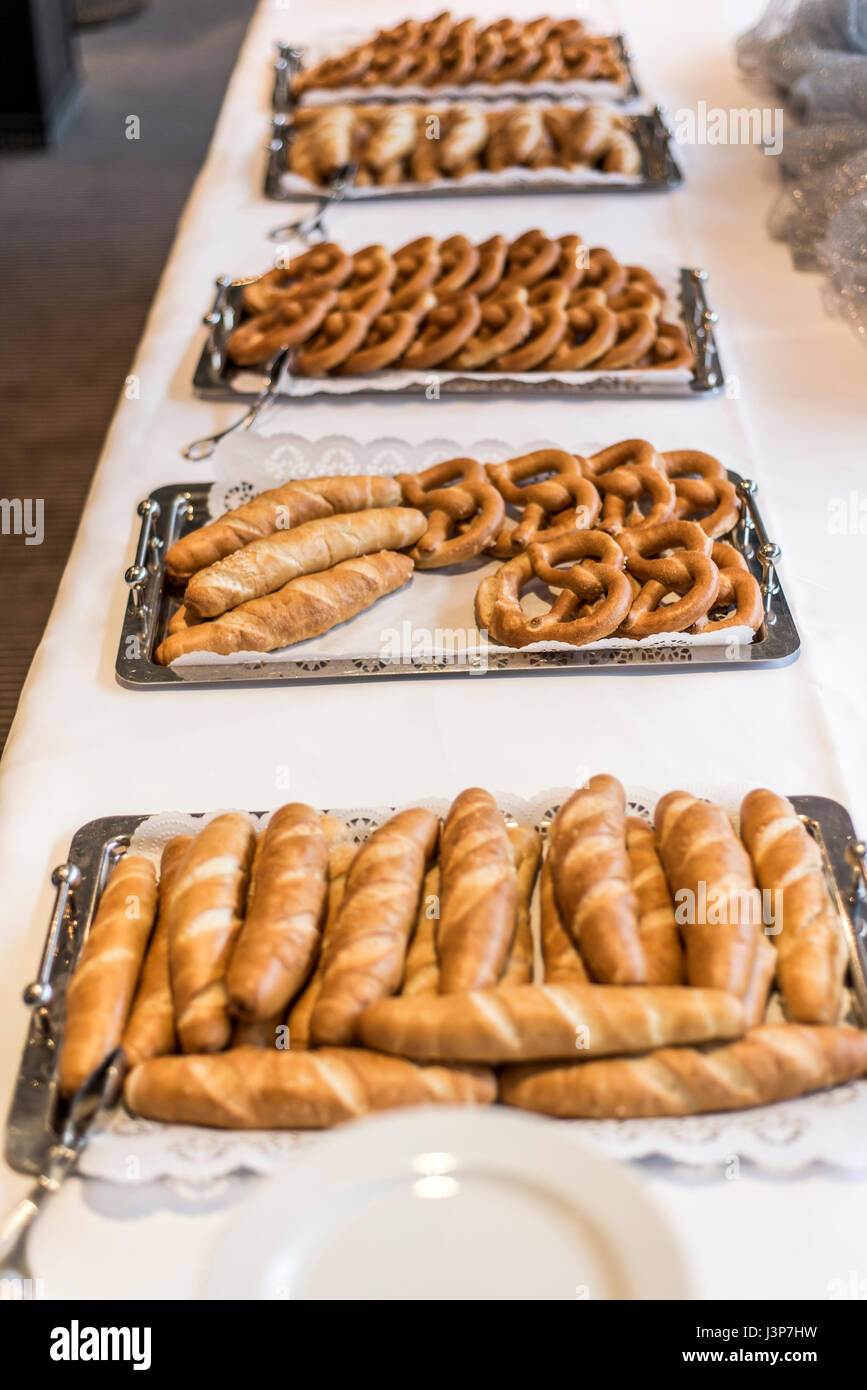Sophisticated Birthday Catering Maddington for an Advanced Touch
Sophisticated Birthday Catering Maddington for an Advanced Touch
Blog Article
Understanding the Art of Bakery Products: From Newly Baked Breads to Tempting Pastries and Finger Foods
From the scientific research behind the best loaf of bread, where fermentation and gluten advancement play essential functions, to the finesse required for developing split breads, each element exposes a compelling narrative of workmanship. The adaptability of finger foods shows exactly how flavor and appearance can be skillfully integrated to engage varied preference preferences.
The Science of Bread Making
At the heart of every loaf of bread exists an interesting interplay of chemistry and biology. The procedure of bread making begins with the mix of flour, yeast, water, and salt-- each ingredient playing a vital function in the end product. Flour has proteins, largely glutenin and gliadin, which, when blended with water, kind gluten (Birthday Catering Maddington). This elastic network is necessary for trapping gases created throughout fermentation.
Yeast, a living microorganism, ferments the sugars present in the flour, creating co2 and alcohol at the same time. The co2 gas creates bubbles in the dough, causing it to increase and create a light texture. The temperature level and humidity during fermentation substantially affect yeast activity and, as a result, the bread's taste and texture.

Mastering Bread Methods
Just how can one accomplish the fragile balance of appearance and flavor that defines remarkable bread? Mastering bread techniques needs a deep understanding of ingredients, techniques, and the scientific research behind them. Essential to this craft is the option of top notch ingredients-- flour, butter, sugar, and eggs-- each playing a vital role in the last item's flavor and structure.
The strategy of lamination, which involves folding layers of dough and butter, produces the wanted flakiness in pastries like croissants and puff bread. Accuracy in temperature is crucial, as butter needs to remain chilly to make certain optimal layers. Likewise, correct mixing methods, such as the creaming strategy for cakes, make sure even consolidation of air and fat, leading to a light and airy crumb.
In addition, maintaining the ideal moisture levels throughout cooking can substantially impact the outcome, guaranteeing that breads rise correctly and accomplish that golden-brown surface. The art of bread additionally requires perseverance and technique; each effort enhances one's skill and understanding of the elaborate balance required to create irresistible pastries that thrill the detects. Proficiency in these methods eventually differentiates a skilled bread cook from an amateur.
Kinds of Finger Foods
The world of culinary delights expands beyond pastries to incorporate a vast selection of finger foods, which are commemorated for their comfort and flexibility. These bite-sized treats are perfect for celebrations, supplying a selection of tastes and structures that cater to varied tastes buds.

On the sweeter side, miniature tarts and bite-sized cupcakes use a fascinating finish to any type of dish, appealing to those with a craving for sweets. Moreover, cheese and charcuterie boards function as an innovative choice, allowing guests to customize their attacks with an array of meats, nuts, fruits, and cheeses.
Taste Profiles in Cooking
Baking is an elaborate dance of flavor profiles that combines pleasant, full-flavored, and umami notes to develop imp source an unified experience for the taste buds. Comprehending these profiles is important for bakers seeking to elevate their productions.
Components such as chocolate and sugar introduce complicated sweet notes that can either control or complement various other flavors. that site Active ingredients like herbs, cheeses, and seasonings can change an easy dough right into a diverse taste experience.
Umami, frequently ignored in baking, plays a considerable role in enhancing tastes. Ingredients such as aged cheeses, fermented items, or also certain nuts add to a savory deepness that boosts overall preference.
In addition, the interplay of level of acidity from active ingredients like buttermilk or citrus zest can brighten tastes, offering a rejuvenating counterpoint to sweet taste. By attentively combining these flavor accounts, bakers can craft items that resonate with diverse tastes buds, developing an unforgettable culinary experience. Inevitably, understanding flavor profiles is essential to technology on the planet of baking.
Necessary Cooking Devices and Ingredients
Recognizing flavor accounts in cooking sets the stage for selecting the right devices and active ingredients that assist in the development of extraordinary baked goods. A dependable set of baking pans-- such as sheet pans, loaf frying pans, and cake pans-- is important for achieving wanted forms and structures.
Flour offers as the backbone of the majority of recipes; picking the best kind-- be it bread, bread, or all-purpose flour-- can substantially influence the end result. Cooking powder and baking soda are important for creating lift in pastries and cakes.
In addition, incorporating flavor boosters like vanilla extract, flavors, and citrus enthusiasm can elevate your developments. By ensuring access to these basic tools and components, bakers can with confidence start their culinary journey, crafting a varied array of wonderful baked products.
Verdict
Finally, the art of bakeshop Click This Link items incorporates a profound understanding of both creative techniques and scientific principles. Proficiency in bread production, bread prep work, and finger food discussion reveals the elaborate connections in between procedures and active ingredients. Furthermore, exploring diverse flavor profiles enhances the baking experience, while necessary devices and active ingredients give the structure for success. Ultimately, the enchanting world of cooking grows on the unified interaction of scientific research and imagination, leading to a myriad of wonderful culinary creations.
Just how can one accomplish the delicate equilibrium of appearance and flavor that defines exceptional bread? Essential to this craft is the choice of top quality ingredients-- flour, butter, sugar, and eggs-- each playing a critical function in the final item's flavor and appearance.

Comprehending taste accounts in cooking collections the phase for picking the right devices and ingredients that help with the development of outstanding baked items. Discovering varied taste profiles enriches the baking experience, while important tools and components supply the foundation for success.
Report this page